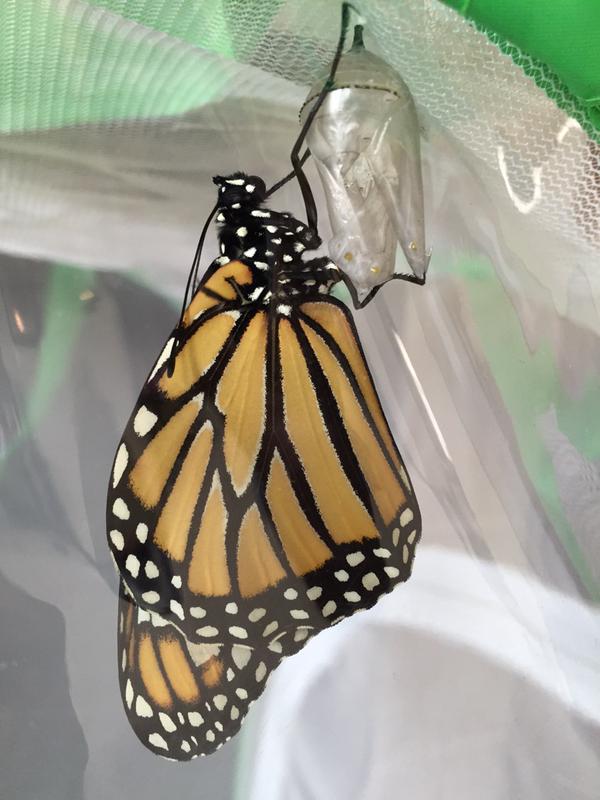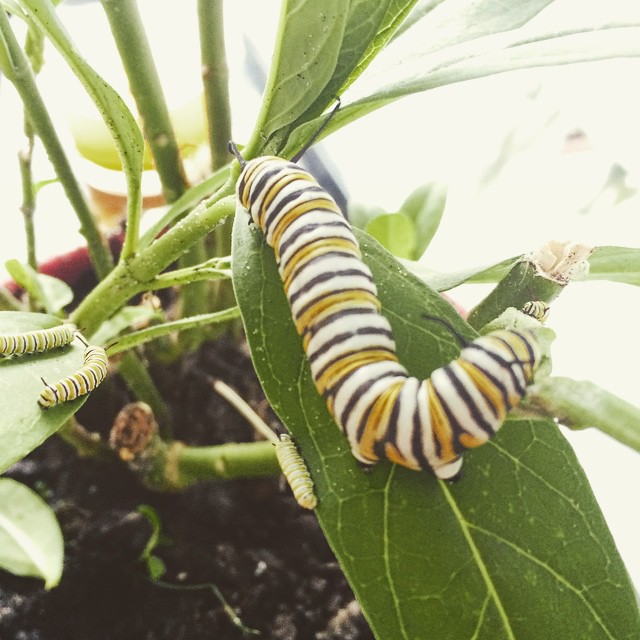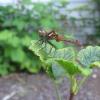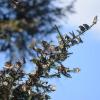Breeding and releasing monarch butterflies might seem like a harmless activity, but it can have negative impacts on wild populations and harm rather than help monarch butterfly conservation efforts.
Breeding and releasing monarch butterflies might seem like something that might help struggling populations. Unfortunately, the practice holds the potential to actually harm wild monarchs and disrupt research that is critical to their conservation. Demonstrating the breadth of concern that exists over this practice, the Xerces Society has joined with the nation’s leading monarch researchers to urge individuals to avoid releasing monarchs into the wild as a conservation strategy.
Today, a group of ten monarch researchers and conservationists from across the U.S. issued a statement highlighting concerns with the release of commercially raised and other mass-reared monarch butterflies.

Monarch butterflies are routinely purchased from commercial growers for release at weddings, funerals and other celebrations, and to raise in classrooms and exhibits for educational purposes. The exact numbers of butterflies involved in this trade is unknown. The monarch rearing industry estimates that no more than a quarter-million adult butterflies are sold specifically for the purpose of release at weddings and other events. How many monarchs are sold as eggs, larvae, or chrysalises and released into the environment once they become adults is unknown, but may be several times as many. In addition, out of concern for monarch conservation, some private citizens are also rearing hundreds to thousands of monarchs in backyard operations for release into the wild. The result is likely a million or more monarchs reared and released each year.
One of our collaborators, Dr. Karen Oberhauser, a professor at the University of Minnesota and a leading monarch researcher, observed that “while many people who release mass-reared monarchs into the wild are trying to help the population, this practice may actually do more harm than good.” Farmed monarchs could spread diseases to wild monarchs, be less fit to survive in the wild, and disrupt our ability to study monarchs and their movements.
Mass production of monarchs in captivity can facilitate the spread of disease to wild monarchs. For example, higher levels of common diseases can build up in captive rearing settings, pathogens can evolve higher virulence in captivity, and diseases can be introduced to new regions when humans move monarchs to areas where they may not naturally go. Currently, there are no requirements that commercial butterfly breeders or others who raise captive monarchs follow disease preventing protocols, nor are there government agencies that routinely tests commercial monarchs for diseases.

The threat this poses to monarch populations was underscored by Dr. Sonia Altizer, a professor at the University of Georgia and leading researcher on monarch diseases: “Disease can build up in farmed monarchs, which can then spread to wild butterflies. Even monarchs that survive to adulthood can still carry and spread infections, placing already reduced populations of wild monarchs at greater risk.”
At a time when monarch populations are at record low numbers, research that informs conservation is absolutely critical. For example, scientists are trying to understand how monarchs may respond to changes in climate and habitats. When monarchs are observed at unusual times of the year, it is not possible to know if the butterflies were purchased and released or if they arrived on their own. In the western U.S., scientists are currently identifying the key areas where wild monarchs breed to guide restoration and enhancement efforts. Releasing farmed monarchs into the wild can directly interfere with that research.
We know that this statement will cause vigorous debate. Emotions often run high when discussing the protection of the monarch, which stands apart from any other butterfly in being so widely loved. The monarch is embedded in our collective memory as a transient beauty that graced our summer landscapes and which engenders an enthusiastic and caring following. However, for this butterfly to have a secure future, we must discuss and consider all threats and potential threats.
The scientists and conservationists who released this statement include:
Sonia Altizer, Professor at the University of Georgia and Director of Monarch Health;
Lincoln Brower, Professor at Sweet Briar College;
Elizabeth Howard, Director of Journey North;
David James, Associate Professor at Washington State University;
Eva Lewandowski, graduate student at the University of Minnesota;
Gail Morris, Director of Southwest Monarch Study;
Kelly Nail, graduate student at the University of Minnesota;
Karen Oberhauser, Professor at University of Minnesota and Director of Monarch Larva Monitoring Project; and
Robert Michael Pyle, Co-coordinator, Northwest Lepidoptera Survey.
This blog was adapted from a press release, with contributions from Karen Oberhauser, Sonia Altizer, Elizabeth Howard, and Eva Lewandowski.



